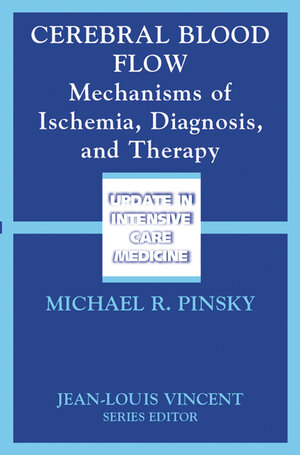
×
![Buchcover ISBN 9780387953830]()
Cerebral Blood Flow
herausgegeben von Michael R. PinskyThis volume covers the most important aspects of cerebral blood flow (CBF) from bench to bedside. It first defines the basic physiology of CBF, those qualities that make it unique or are shared with other organs and their clinical implications. This section is followed by a section on CBF pathophysiology that explores many of the known and proposed mechanisms of cerebral ischemia in stroke and trauma states. The third section describes the numerous and powerful means available to measure blood flow, tissue function and overall perfusion. These are essential measures if one is to assess the effectiveness of therapies aimed at preventing or reversing cerebral ischemia. The final section describes the interesting and often successful recent clinical trials aimed at preventing or reversing cerebral ischemia. This collection of multicenter trial data and their implications in one volume is unique in this field. This book addresses all the major aspects of CBF from basic issues to clinical practice.
TOC: SECTION 1, Physiology and Pathophysiology: 1) History of Cerebral Blood Flow Assessment 2) Neural Regulation of the Cerebral Circulation 3) Role of Endothelium in Regulation of the Brain Microcirculation, 4) Molecular Genetics of Cerebral Aneurysm SECTION 2, Ischemic Brain Injury: 5) Triggering Events in Ischemic Brain Injury 6) Ischemic Mechanisms in Traumatic Brain Injury 7) Coupling and Compartmentation of Cerebral Blood Flow and Metabolism 8) The Genetic Control of Ischemic Neuronal Cell Death 9) Cerebral Resuscitation from Temporary Complete Global Brain Ischemia 10) The Ischemic Penumbra: Pathophysiology and Therapeutical Implications SECTION 3, Assessment of Cerebral Blood Flow: 11) The Assessment of Determinants of Cerebral Oxygenation and Microcirculation 12) Computed Tomography, Angiography, and Perfusion Imaging of Acute Stroke 13) The Use of Xenon/CT Cerebral Blood Flow Studies in Acute Stroke 14) Advances in Imaging in Ischemic Stroke 15) Assessment of Cerebrovascular Pathophysiology 16) Cerebral Blood Flow Measurement with Positron Emission Tomography SECTION 4, Current Status of Clinical Trials in Acute Stroke 17) Thrombolysis for Acute Stroke 18) Neuroprotective Stroke Trials: A Ten Year Dry Season
TOC: SECTION 1, Physiology and Pathophysiology: 1) History of Cerebral Blood Flow Assessment 2) Neural Regulation of the Cerebral Circulation 3) Role of Endothelium in Regulation of the Brain Microcirculation, 4) Molecular Genetics of Cerebral Aneurysm SECTION 2, Ischemic Brain Injury: 5) Triggering Events in Ischemic Brain Injury 6) Ischemic Mechanisms in Traumatic Brain Injury 7) Coupling and Compartmentation of Cerebral Blood Flow and Metabolism 8) The Genetic Control of Ischemic Neuronal Cell Death 9) Cerebral Resuscitation from Temporary Complete Global Brain Ischemia 10) The Ischemic Penumbra: Pathophysiology and Therapeutical Implications SECTION 3, Assessment of Cerebral Blood Flow: 11) The Assessment of Determinants of Cerebral Oxygenation and Microcirculation 12) Computed Tomography, Angiography, and Perfusion Imaging of Acute Stroke 13) The Use of Xenon/CT Cerebral Blood Flow Studies in Acute Stroke 14) Advances in Imaging in Ischemic Stroke 15) Assessment of Cerebrovascular Pathophysiology 16) Cerebral Blood Flow Measurement with Positron Emission Tomography SECTION 4, Current Status of Clinical Trials in Acute Stroke 17) Thrombolysis for Acute Stroke 18) Neuroprotective Stroke Trials: A Ten Year Dry Season


